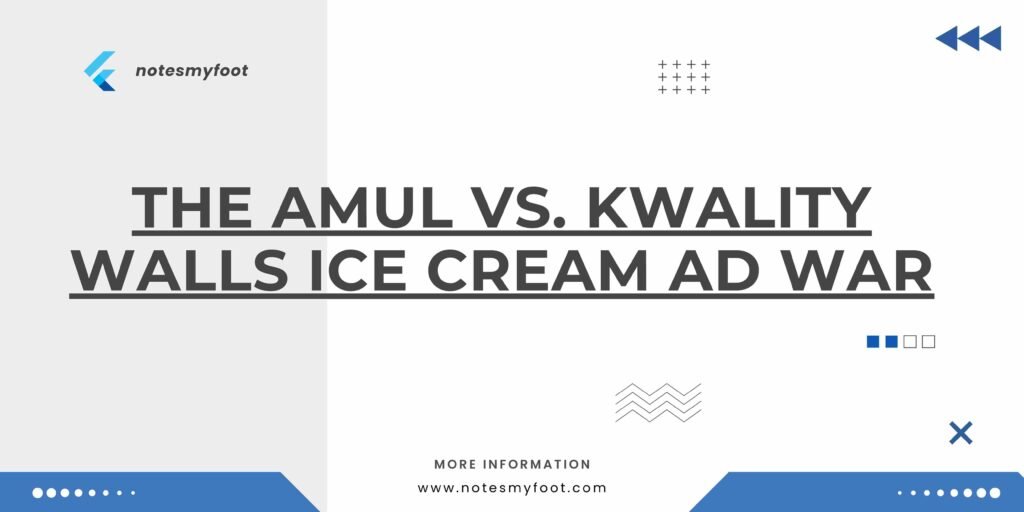
The Amul vs. Kwality Walls Ice Cream Ad War: Analyzing Advertising Appeals, Ethics, and Brand Wars
In the competitive world of advertising, brands often engage in fierce battles to capture the attention of consumers. One such notable ad war unfolded between Amul vs. Kwality Walls in the realm of ice cream advertisements. This blog post will delve into the intriguing details of this ad war, analyzing different forms of advertising appeals, exploring advertising ethics, scrutinizing product disparagement elements, evaluating the impact of ads on consumer awareness, and Amul vs. Kwality ultimately uncovering the reality behind the brand wars.
About GCMMF and HUL:
To understand the context of this ad war, it is essential to shed light on the companies involved. Gujarat Cooperative Milk Marketing Federation (GCMMF), popularly known as Amul, is an Indian dairy cooperative that has expanded its product line to include ice creams. On the other hand, Hindustan Unilever Limited (HUL) is a multinational conglomerate that owns Kwality Walls, a prominent ice cream brand.
Amul's Controversial Ad - Television and Print Media:
Amul’s advertising campaign stirred up a storm with its controversial ads targeting Kwality Walls. The ads, aired on television and featured in print media, employed various advertising appeals to capture the attention of viewers and readers. These appeals ranged from emotional to humorous, aiming to establish Amul as the superior choice in the ice cream market.
The Key Issue - Difference Between Ice Cream and Frozen Dessert:
The crux of the ad war revolved around the distinction between ice cream and frozen dessert. Amul highlighted that its products were made with real milk and labeled as “ice cream,” whereas Kwality Walls offered frozen desserts, which contained vegetable oil instead of dairy fat. This key difference became a focal point for both companies to assert their superiority.
HUL's Response:
In response to Amul’s ads, HUL swiftly launched a counter-campaign to defend its Kwality Walls brand. HUL emphasized the quality and taste of their frozen desserts, showcasing their wide range of flavors and appealing packaging. The battle intensified as both brands unleashed a series of advertisements, each attempting to undermine the other’s credibility.
The Court Drama - Arguments in Favor and Against:
Reality - Brand Wars Amul vs. Kwality
Beyond the advertisements and courtroom drama, the underlying reality of brand wars is often a strategic battle for market dominance. While both Amul and Kwality Walls fought vigorously to defend their positions, consumers became more aware of the differences between ice cream and frozen desserts. The ad war, in a way, served to educate the public about product composition and raise their consciousness about their choices.
Conclusion:
The Amul vs. Kwality Walls Ice Cream Ad War serves as a captivating case study in the realm of advertising. By analyzing different forms of advertising appeals, exploring advertising ethics, scrutinizing product disparagement elements, and evaluating the impact on consumer awareness, we gain valuable insights into the tactics employed by brands to capture our attention. Ultimately, brand wars like these not only shape consumer preferences but also push companies to innovate and improve their offerings in a competitive marketplace. Also get to know about Mercedes-Benz India: Approach to Capturing a Younger Segment case study
